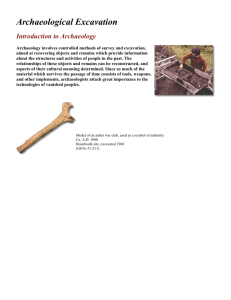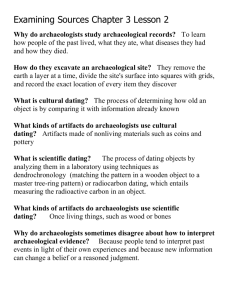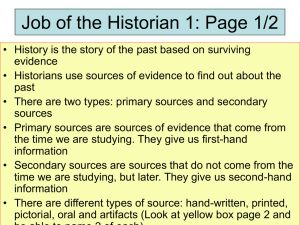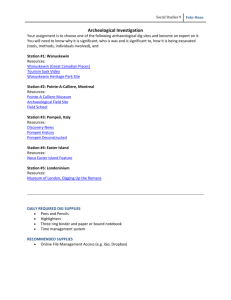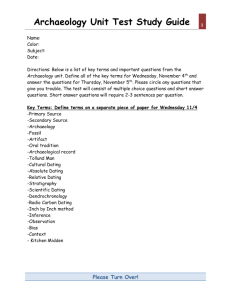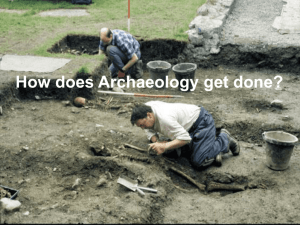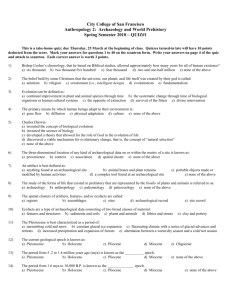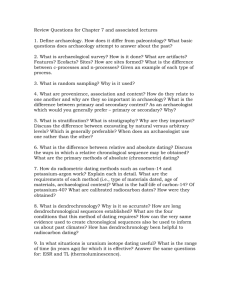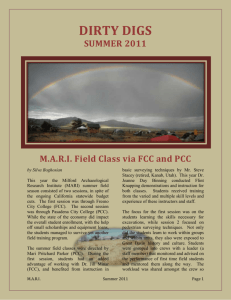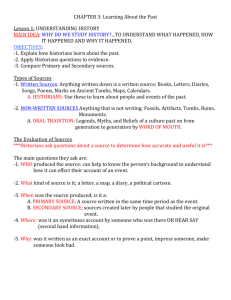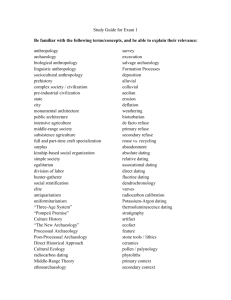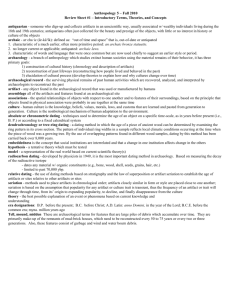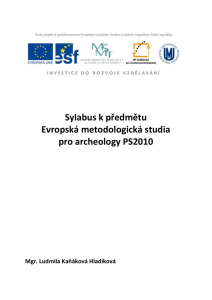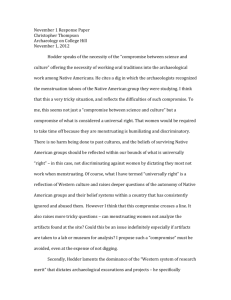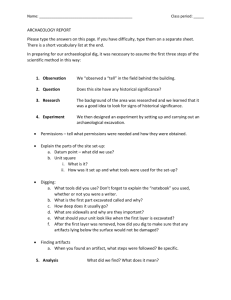Introduction to Archaeology 1. What is Archaeology Archaeology
advertisement
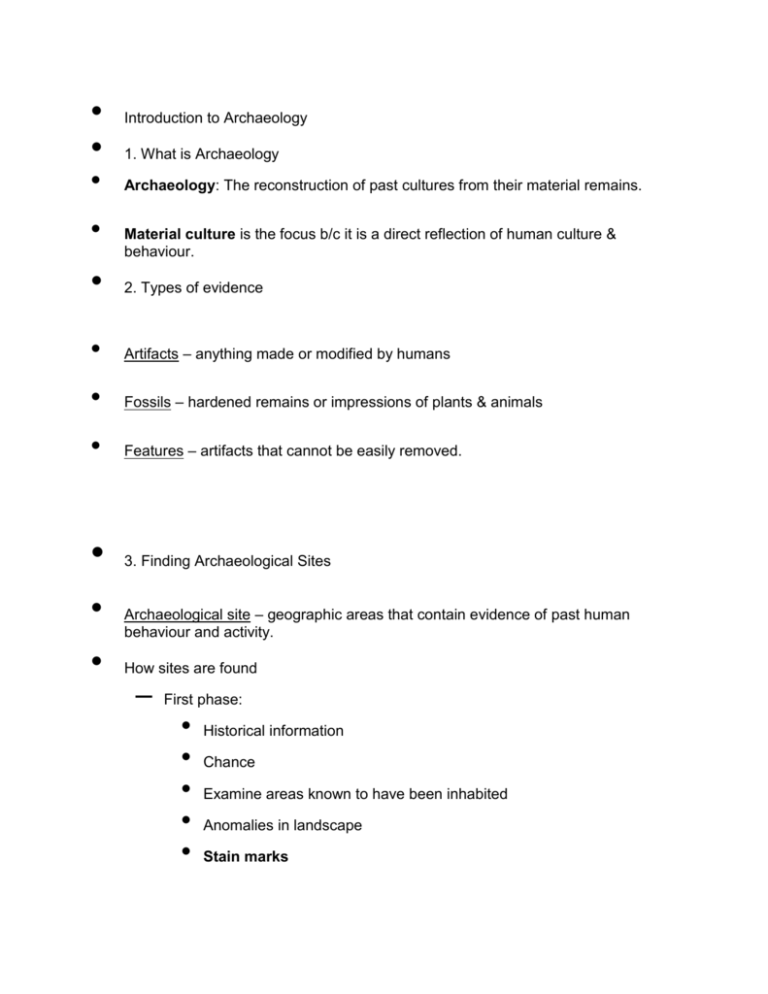
• • • • Introduction to Archaeology 1. What is Archaeology Archaeology: The reconstruction of past cultures from their material remains. Material culture is the focus b/c it is a direct reflection of human culture & behaviour. • 2. Types of evidence • Artifacts – anything made or modified by humans • Fossils – hardened remains or impressions of plants & animals • Features – artifacts that cannot be easily removed. • 3. Finding Archaeological Sites • • Archaeological site – geographic areas that contain evidence of past human behaviour and activity. How sites are found – First phase: • • • • • Historical information Chance Examine areas known to have been inhabited Anomalies in landscape Stain marks • • • • • • • • • • • • Second Phase – Site prospection • Surface techniques • Sub-surface techniques – pedestrian survey – Ground penetration radar – Test pits 4. Excavation Excavation is destructive & expensive Most sites are not fully excavated 2 main goals – recovery & detailed recording of artifacts Provenience – the location of an artifact in relation to the other remains. Use of grids 5. Methods for Dating Material Remains Relative dating - determines the age of objects relative to one another. Chronometric dating - determines the absolute age of an object. Relative Dating Methods Example of stratigraphy at Huaca De La Luna (Trujllo, Peru) • • • • • • • • • • • • • • • • Chronometric Dating Methods Radiocarbon Dating 6. What Can We Learn From Artifacts? What is its form? – Typology How was it made? – experimental archaeology How was it used? What can we learn from artifacts cont… What can we learn from art? Prevalence of certain forms indicate their importance but cannot know the exact meaning. Ethnographic analogy – observations of activities & material items of existing societies to interpret archaeological data. What can we learn from features? e.g. Range Site, USA Evidence of how they changed the ways they organized their settlements. 2,300 ya small houses, circular courtyard 1,000 ya larger houses, arranged in rows Suggests change in social organization. • • • • • What can we learn from fossils? Bioarchaeology: study of past cultures through the analysis of human remains. Provides insight into ancient diets, gender roles, social status & patterns of activity E.g. Kwaday Dan Ts’inchi Archaeology & Ethics Kuwoot yas.ein: His Spirit is Looking out from a Cave

